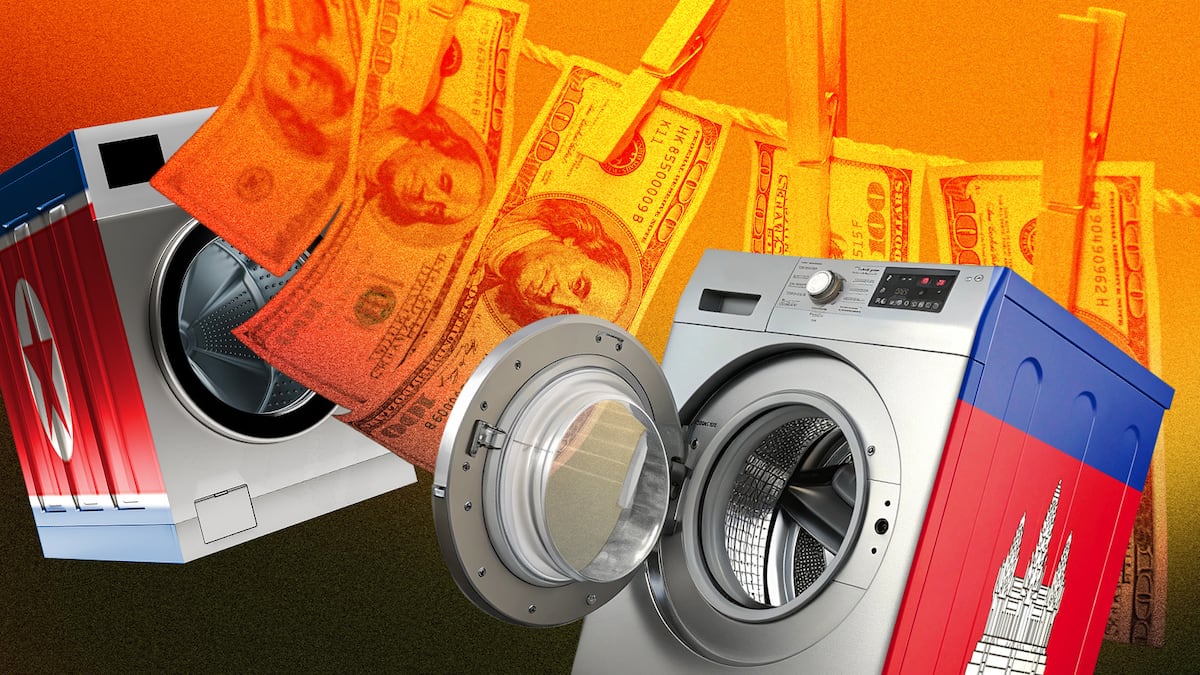- An investigation shows how an illicit exchange in Cambodia tainted the industry.
- Binance says it does not "turn a blind eye" to illicit activity.
- Attributing bad actors onchain is becoming increasingly complex, says expert.
A version of this story appeared in The Guidance newsletter on November 17. Sign up here.
On Monday morning, the International Consortium of Investigative Journalists published an explosive investigation into the vast network of crypto exchanges and over-the-counter desks that facilitate the movement of millions in illicit funds.
At its centre: a Cambodia-based crypto exchange called Huione, which has links to the country’s ruling family, as DL News reported in 2024.
In May, the US Treasury Department designated Huione as a money-laundering operation for its role in cleaning digital assets generated from illicit activity.
North Korean hacker groups, as well as large scam centres in Southeast Asia, have used the exchange to move ill-got funds, the Treasury said.
“Huione Group has established itself as the marketplace of choice for malicious cyber actors like the Democratic People’s Republic of Korea and criminal syndicates, who have stolen billions of dollars from everyday Americans,” Secretary of the Treasury Scott Bessent declared.
And the Treasury Department, via the Financial Crimes Enforcement Network, or FinCen, moved to sever it from the US financial system.
According to the ICIJ investigation, however, it doesn’t appear that some of the largest crypto exchanges got the memo.
$600 million from Huione
Binance and OKX recorded more than $600 million in funds from Huione, according to reports.
Between July 2024 and July 2025, Binance hosted over $400 million in deposits flowing from Huione.
A Binance spokesperson told the ICIJ that it maintains the highest security standards and works closely with authorities to monitor risky activity.
“It is categorically false that Binance ‘turns a blind eye’ to criminal activity‚" a spokesperson for the exchange told DL News.
They added that data from analytics firms Chainalysis and TRM Labs indicates Binance’s exposure to illicit funds has dropped by up to 98% since 2023.
In 2023, Binance pleaded guilty to having failed to prevent criminals, sanctioned entities, and other bad actors from laundering billions of dollars in dirty money, according to court filings.
The Department of Justice fined the company $4.3 billion and ordered a three-year third-party monitor to oversee its operations.
“While, as with traditional financial institutions, Binance cannot stop properly onboarded customers from transferring funds onto the platform, we have robust systems in place to flag and investigate suspicious transactions and take action where appropriate, including restricting accounts and freezing funds in line with our regulatory obligations,” the spokesperson said.
Meanwhile, OKX, the crypto industry’s fifth-largest crypto exchange by volume, recorded another $220 million in deposits over five months this year.
“The flows cited in the article represent a very small fraction of overall activity on our platform,” an OKX spokesperson told DL News.
“The vast majority of OKX usage is legitimate and occurs under robust anti-money laundering and know-your-customer controls that we continue to strengthen in line with evolving regulatory expectations.”
AML and KYC provisions are security measures companies must implement to combat financial crime.
Once the Treasury Department’s blacklist of Huione was put in place in October, an OKX spokesperson told the ICIJ the exchange paused all interactions with Huione.
Enormous sums
While these remain enormous sums, they pale in comparison to the dirty money flowing through traditional finance.
The United Nations estimates that roughly $2 trillion in illicit funds is laundered each year using traditional financial rails. By comparison, the analytics firm Chainalysis reported that the total amount of illicit cryptocurrency transactions over the last five years is $189 billion.
Still, for an industry maturing into a fully fledged financial market, the report is damning for several reasons.
It suggests that suspicious actors continue to find holes in the industry’s ability to monitor illicit finance.
It also highlights how a patchwork of regulations makes it challenging to stop criminal activity, especially for technology that knows no borders.
Meanwhile, illicit actors are constantly evolving their strategies, making it difficult to distinguish bad money from good.
“Not every address linked to a bad actor is used exclusively for illicit activity, and many intermediaries — such as over-the-counter brokers, mixing services, or peer-to-peer hubs — facilitate both licit and illicit flows,” Ari Redbord, global head of policy and government affairs at TRM Labs, told DL News.
“That nuance is essential when interpreting blockchain intelligence and understanding what attribution actually represents.”
Liam Kelly is DL News’ Berlin-based DeFi correspondent. Have a tip? Get in touch at liam@dlnews.com.


